
ShrubHub's Ultimate Guide to Raised Garden Beds
Published: 12/11/2022 | Updated: 29/03/2023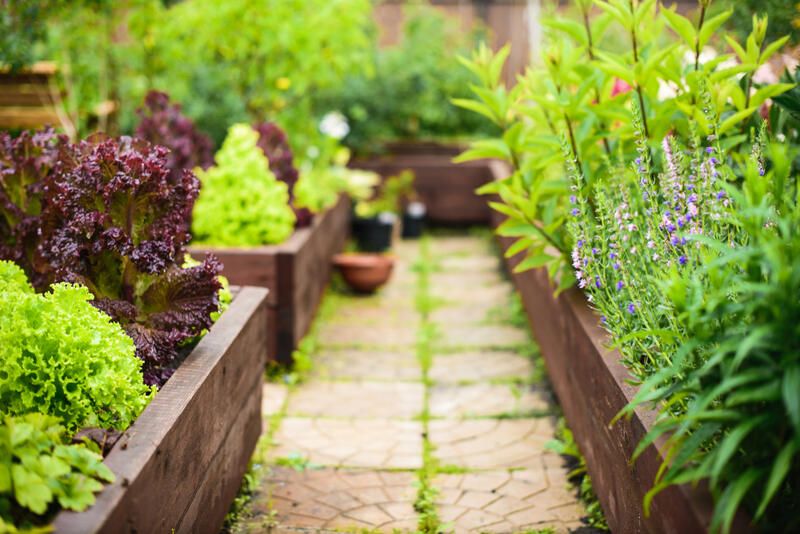
Nothing completes a house like a gorgeous green paradise outside. The benefits compared to a growing, glowing yard versus that of a dead, shrubbed one is unbeatable. Your curb appeal and even your mental health grow with the plants and flora. It has been proven that greener yards drastically improve one's well-being. Not to mention it's fantastic for those with a green thumb.


For most gardens, raised garden beds are a fantastic concept. Compared to putting a typical garden in the ground, they have several advantages and can be a great DIY project. For anyone with back issues or to keep away annoying animals, raised garden beds are a terrific option. A raised garden bed's one drawback is that you must first construct one before you can begin planting.
Raised beds allow you to practically place your garden wherever in your yard while still preserving the best, potting soil and growing conditions. Raised beds are popular with gardeners everywhere, and we're sure you'll enjoy using them as well. We'll even teach you how to create your own! Here are seven reasons why you need a raised garden bed.
Learn everything there is to know about raised bed gardens, including how big they should be, what kind of soil to use in them, their many benefits, raised garden bed ideas, and more.
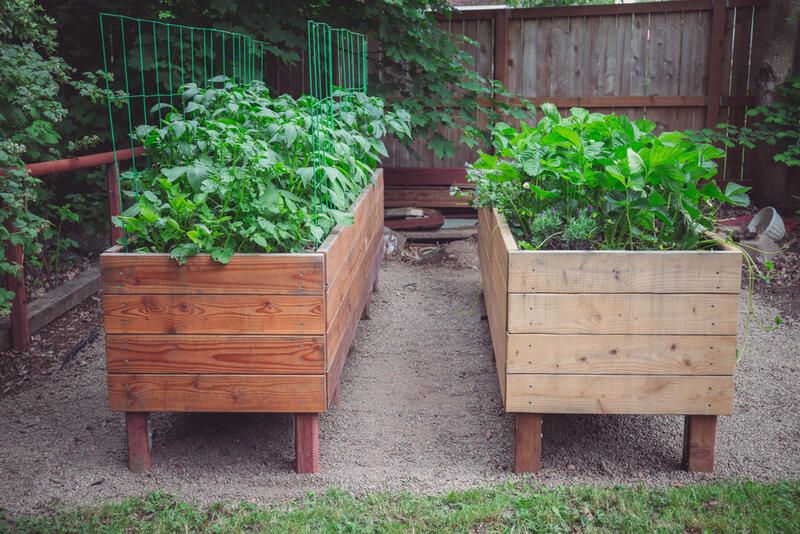
What is a Raised Garden Bed?
Several things can be conveyed by a raised bed garden! However, generally speaking, it occurs when a planting bed is placed on top of your current soil. It can range in height from a few inches to waist-high (or more), and it can be constructed from a variety of materials. Typically, there is space left around the perimeter of each bed so you may walk around it rather than through it, preventing the soil from becoming compacted. This is crucial because roots develop more quickly when water and air can flow freely through the soil.
Most raised beds include frames or cold frames, but you can choose any material you like for that frame. Traditional raised bed frames are typically made of wood or durable plastic, but they can also be constructed out of other materials, such as bricks, patio pavers, stones, cinder blocks, broken concrete from recently renovated sidewalks, corrugated metal, straw bales, and so on. To put it another way, you can build one using new or used materials to meet your landscape and sense of design. Raised beds are also available in kits, so if you don't want to build anything, you don't even have to.
Although it can be any length you choose, the ideal raised bed is narrow enough (often 4 feet or less) that you can reach into the center from either side. The depth of the bed you choose will depend on what you wish to produce; for instance, plants with deep roots, such as tomatoes and tiny fruit trees, require more soil than those with shallow roots, such as lettuce and pansies. To avoid bending over to tend to your plants, raised beds can also be elevated on the legs.
Even though a hardware cloth bottom can be useful if you have problems with gophers or other tunneling animals, a raised bed doesn't necessarily need one. They can also have solid bottoms, which are ideal for patios and decks, but they still require a good number of drainage holes so that any additional water has somewhere to go.
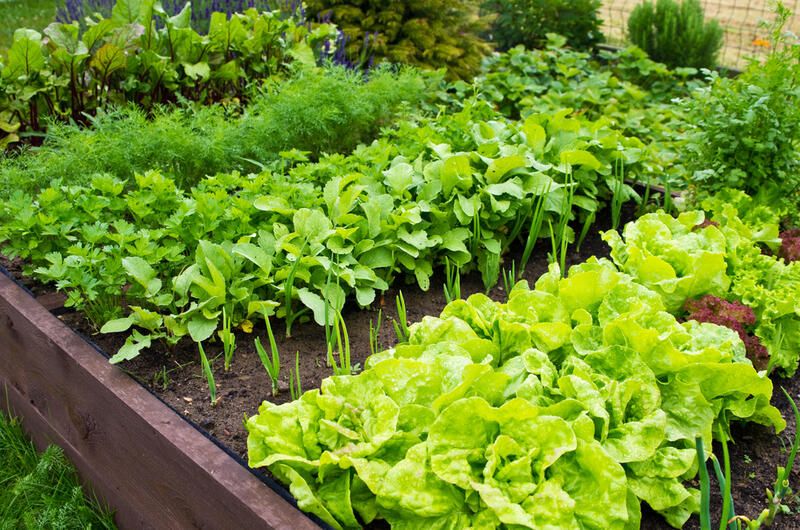
Raised Garden Beds: Why Use Them?
Growing several of your favored flowers and growing a vegetable garden might be made simpler with a raised garden bed. Growing plants above ground level make sense, whether you struggle with finding rich soil or struggle with soil that appears inhospitable to your favorite plants or the idea of bending down while weeding and harvesting give you back pain.
Soil Building/Better Soil
Controlling your soil is a strong argument in favor of using raised beds. Diseases such as root rot are brought on by heavy clay that doesn't drain well. Sandy soil lacks nutrients, dries out rapidly, and makes plants hungry. Raised beds give you the chance to fill the frame with nourishing, weed-free soil that drains well. You provide the ideal conditions for your plants' luxuriant, wholesome growth. Because you don't have to worry about what's underneath, this is your best option for really bad soil. And you can see results right now! There is no tilling involved, nor is there any waiting for years for improvements. You only need to add fresh dirt to get started.
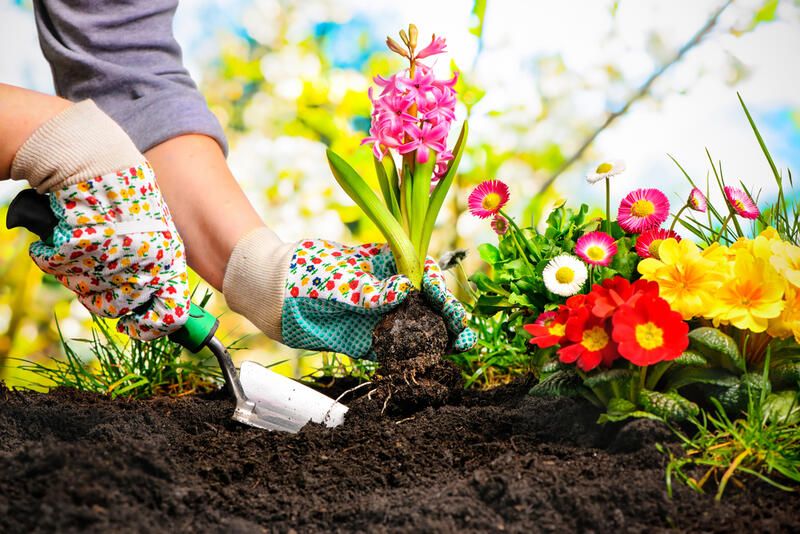
No More Bending Over
Raised garden beds are healthy for your body as well. You might no longer need to stoop to plant, weed, deadhead, or harvest. If you have knee or back issues, this is extremely beneficial.
Minimal Compaction
When you don't have to step into the garden to take care of it, it reduces compaction. This makes it easier for plants to develop healthy root systems.
Make Your Harvest Last Longer
Installing a raised garden bed will also increase your harvest. Taller beds thaw out earlier in the spring, allowing you to plant frost-tolerant favorites like salad greens for a couple more weeks.
Avoid Pests
Raised beds with good design help deter pests. Most rabbits can't get up on a bed that is higher than their waist. Deer reportedly avoid the spaces between tightly spaced beds, according to some gardeners. To keep gophers and other pests that dig tunnels out, you can also line the beds with wire mesh.
Add Visual Interest
Finally, whether you construct the bed boundaries with stone, pavers, or wood (landscaping timbers), a raised garden bed can be an attractive component in the garden. Let's examine the advantages and disadvantages.
We also genuinely adore the aesthetics of raised beds. Their aesthetic worth is a huge asset to my property, in our opinion. We can't imagine not planting in raised beds given our options.
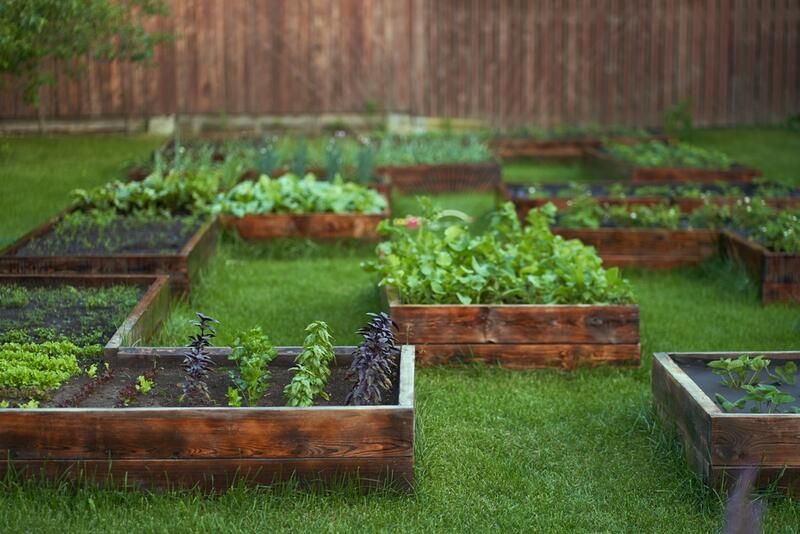
The Benefits of Having a Raised Bed Garden
While others are seeking ways to enhance their current gardens, many people wish to start their raised beds for the first time. And it's now simple to cultivate plants in a raised bed. You may easily purchase a raised bed online that only takes a few minutes to assemble. Raised garden beds, elevated beds, and tiered beds are all options.
There are numerous advantages to adopting raised beds, which is why more and more gardeners are making the switch. The following are some benefits of gardening in raised beds:
-
Since the plants are planted in a small area, there are fewer weeds.
-
Physical barriers against pests are created by these garden boxes.
-
They strive to avoid soil compacting and strengthen the soil's structure.
-
It's simple! Although there is some carrying and spreading involved, no tilling is necessary.
-
In spring, raised beds to warm up before the surrounding soil. especially if there is a stone or concrete edge around them. As a result, Northern gardeners can start their annuals and vegetables earlier in the growing season.
-
Excellent drainage. better drainage may be achieved by raising beds above their base level.
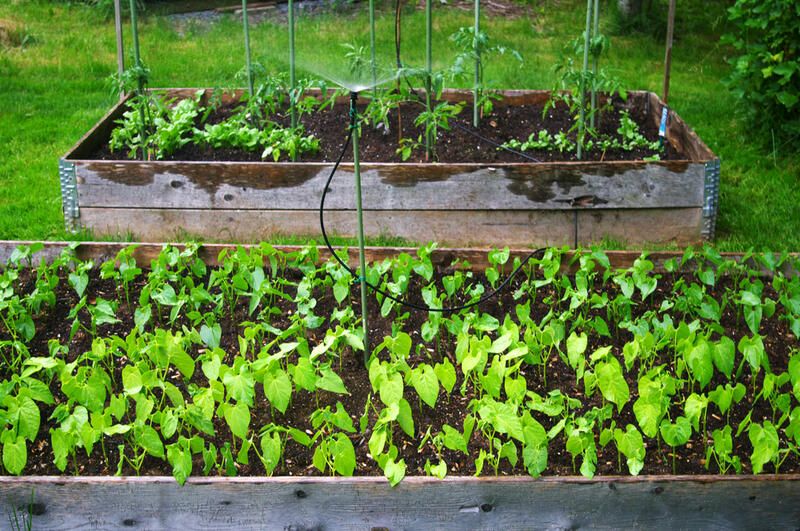
The Cons
If raised beds are the ideal gardening solution for you, there are many factors to consider. Some talented gardeners like in-ground plantings.
Raised bed construction might be pricey. It can be, but it doesn't have to be. It might be worthwhile to search websites, your local hardware store, and garden stores for stuff you can recycle and create DIY raised garden beds.
Other possible drawbacks of raised beds include:
-
Their enduring nature, for the most part, is beneficial, but if you anticipate moving your garden shortly, a permanent raised bed structure will need to be dismantled.
-
Compared to surface soil, elevated soil is more exposed to heat and cold. Extreme weather conditions may affect the surrounding soil and plants if your bed's sidewalls aren't extremely thick.
-
In comparison to surface soil, raised soil might dry out more quickly.
-
Raised beds need room for routes through the garden and for mobility between the beds. Losing some of your real estates to walking space could be a deal-breaker if you have very little of it.
-
It might take some time. Although you end up having a bed right away, you must wait until the soil has had time to settle before you plant perennials, shrubs, or trees. Planting solely annuals the first year is one way to make any settling less of a problem.
-
For trees and bushes, perhaps not Although it's not impossible, building a raised garden bed large enough to accommodate trees or tall plants is challenging and requires a lot of soil.
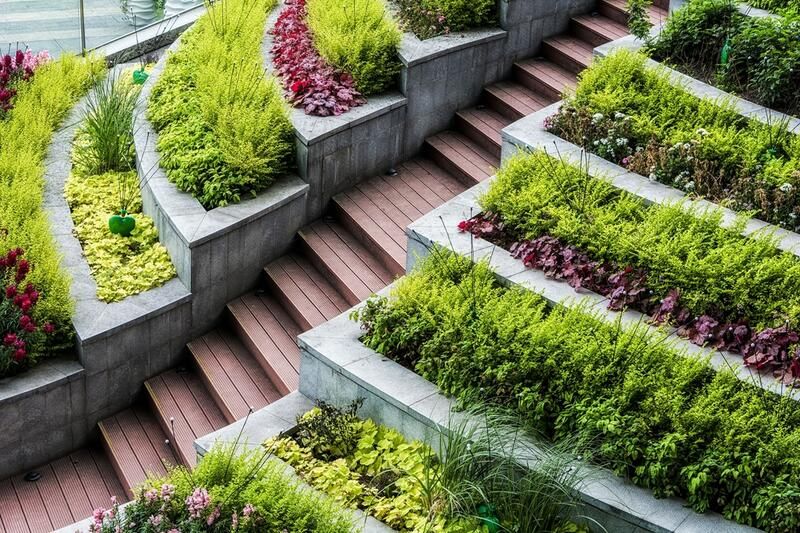
Garden Planning: Building Raised Beds
There are numerous raised bed models and variations available so make sure to think about your space. There are smaller beds for more compact space but if you have enough space or growing space, opting for a larger more permanent solution is a great idea. Keep in mind that an edible garden, which grows fruits and vegetables, is where these rules and guidelines are most applicable.
Building a raised bed garden doesn't require a lot of room. What you do require is a location with full sun exposure for the majority of the day—at least 6 hours. To develop properly and produce fruit for your harvest, those food plants need a lot of sunlight. So, the optimum garden location will be where your property receives the most sunlight.
If there are several trees on your property that provide shade, you might want to think about performing some selective pruning to allow the sun to reach your garden area.
-
The garden space should ideally be quite level. We advise digging into the hill if at all possible because many of you are starting in a steep area. Before you start building, make that place as level as you can.
Just keep in mind that your raised bed surfaces will need to be level after finished if your location isn't level and you're unable to level the ground. Therefore, you will need to consider starting with an uneven surface in your overall design.
-
Make sure there will be easy access to water in the raised bed area. Is there a nearby faucet? If not, will laying a water hose from the tap to the garden area be practical?
It's simple to forget that a stretched-out garden hose needs to be brought back in frequently (if not daily) to mow, use it elsewhere, keep the dog from chewing it up, and other things. You must be certain that your strategy will work for you because water is essential to gardening success.
-
Take into account your home's accessibility as well. I'm a big supporter of spending time in the garden every day. Spend at least a few seconds admiring what you've created. Spending time each day also enables you to identify diseases and pests early on.
Let's be practical. After a long day, you might feel more inclined to take a seat on your favorite chair if your garden is hidden away at the opposite end of your yard. Don't forget that for a quick dinner, you want the garden's vegetables to be as close as feasible to the kitchen. Why cultivate it if you won't eat it or harvest it?

-
What are the surroundings like for you? Are there any other factors that could affect your finished beds? For instance, does the chosen location have some drainage during periods of heavy rain? If possible, incorporate a way (such as a French drain) for the runoff to travel around the garden area to minimize its influence on your bed structure.
If at all possible, avoid placing your garden in a spot on your land where water likes to collect. Pooled water can still wick up into the beds even if they will be raised, eventually drowning your plants.
-
Will you have to fight off scavengers? Include fence planning in your overall design if you live in a rural location where animals like deer or raccoons frequently visit to graze on your landscaping. Maintaining your garden close to your house may also help to deter predators from ever entering your garden. It makes no sense to go through the work of growing all that food only to have your wildlife neighbors steal it.
While you're making your plans, keep in mind that it doesn't matter which way your raised beds are facing. It won't matter if they are longer from east to west or from north to south. Your plants' positioning will be important, and I'll go into more detail about that later in the series.
Choosing the Right Size for You
Your first choice when creating one or more raised beds is size. You won't need to worry if you get an elevated garden bed kit from your neighborhood hardware or garden retailer. Anyway, creating a raised bed from scratch offers you the option to design it however you see fit. A raised bed should be around 4 feet broad. This enables you to harvest, water, or weed without entering the bed.
Height Consideration
The ideal height is more arbitrary to determine. A raised bed that is a few feet tall allows you to sit on the borders and reach within without bending over. However, it is more expensive because it needs more materials to make it and more dirt to fill it.
Lower raised beds are easy to shift if you change your mind and are less expensive to start with. Most annuals, perennials, and vegetables thrive in soil depths of 12 to 18 inches. of soil. Remember to mound the soil at least 4 to 6 inches high to account for settling. higher than you initially believed necessary.
Soil Types to Use
One of the most popular options is topsoil which is free of weeds and well-drained. Typically, your neighborhood garden center or home improvement store would sell it in sacks. However, it can be more affordable to order in bulk from a nearby landscaping company and have it delivered. Use topsoil that has been screened, wherever you acquire it. Large lumps of unscreened earth will make digging exceedingly challenging.
The ideal choice is to use topsoil or garden soil that has been heavily composted. If you have convenient access to organic waste, such as well-aged manure from a nearby farm, this is a less expensive choice.
Many individuals find that filling their raised beds with a combination of topsoil and potting mix is a simple way to go since the potting mix is typically lighter than bags of topsoil, even though it isn't as cost-effective.

Materials To Use
Stone
A permanent option that lends your raised beds a structural quality is a stone. If you have a flagstone path or patio, this might be a terrific design choice to add to your yard.
Wood
A fantastic and inexpensive option for making a wooden raised bed is cedar or simple wood. Depending on your climate, untreated wood might survive five years or so. While pressure-treated wood has a lifespan that is rough twice as long, some study indicates that the chemicals may not be suitable for veggies. If you're worried, line the interior of your wooden elevated bed with plastic. You can make a wood frame with wood pallets (you can create a pallet planter), landscaping timbers, scrap wood, or simple wood.
Metal
Metal is popularized due to its extended lifespan. A wood or basic frame with corrugated galvanized panels gives off a stylish appearance that fits in well in urban settings. Additionally, elevated beds can be easily built from corrugated stock tanks.
Steel
Rusted steel has a modern appearance and a weathered finish. The material has a reasonably long lifespan because as the surface oxidizes, it forms a shield over the interior. Given that it has a smaller footprint than most types of wood and stone, this material is a fantastic choice for raised beds in limited locations.
Concrete
Alternately, use cinder blocks or bricks to build a more conventional stack. Level the dirt in a designated area before laying the first layer of concrete blocks or cinder blocks to create large planters. For stability, add a second course of blocks, but make sure to space the seams evenly between each course. Add more plants the bigger you go.

Straw Bale Gardening
For gardeners seeking a temporary raised bed solution, a straw bale raised bed is extremely helpful. Your garden gains nutrients as the straw deteriorates, but after a few growing seasons, all the materials may simply be removed and composted (except, possibly, for any synthetic twine).
The Fun Part: Raised Garden Bed Ideas
Raised beds can be used in a variety of practical methods that gardeners have created. We put together a list of some of our favorite raised bed ideas for the ultimate garden bed!
Tiered Raised Garden Bed
Stacking your raised garden beds will elevate them to new, aesthetically pleasing levels. Your garden and backyard will gain dimension from the addition of tiers, and visually pleasing garden beds will be produced.
Elevated Garden Bed
You may construct a raised table-style garden bed by upcycling old table legs or even old tables themselves. These garden beds are excellent for simpler plants like lettuce or as herb planters.
Stack Your Beds
With this smart arrangement, you may increase your growing area while promoting the health of climbing plants. You may grow more in the same space by stacking two small raised beds on top of one another, and peas, beans, and cucumbers love the trellis.
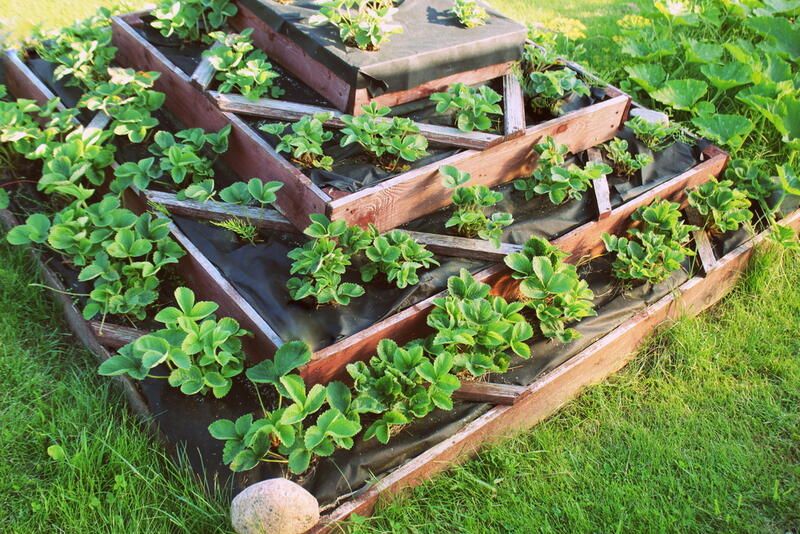
Use Grow Bags
Anyone who feels more at ease with a needle and thread than a toolbox would love this notion. Grow bags are a portable, lightweight alternative to conventional raised beds since you can create them in almost any shape or size.
Old Bathtubs?
This idea for a no-dig garden is perfect if you adore the retro look. Put an old bathtub in your yard, empty it, and fill it with soil. In no time, your plants will be thriving.
Metal Troughs
Purchasing some metal troughs and using them as raised bed planters is another fantastic no-dig alternative. For anyone who wishes to use many planters, metal troughs are an excellent alternative because they are available in several sizes and designs.
Raised Garden Bed on a Chicken Coop
Check out this fantastic DIY project, which can also be constructed on top of a bunny hutch, if you have chickens.
Pest Proof Cover
Growing veggies only to have animals eat them before you can harvest them is the most terrible experience imaginable. What's the best approach to stop it? a cover like this one that keeps animals out.
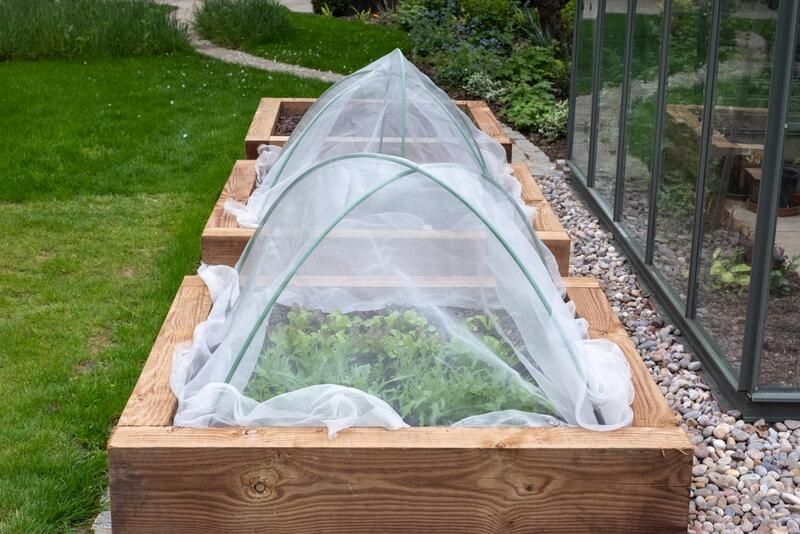
Taller Beds
Here is a guide on how to make tall raised beds, which are simpler to plant and weed because they are made to be about waist height if bending over to tend to a low raised bed is rough on your body.
String Lights
This straightforward concept will help you create a magical environment. To transform your garden into a fantasy setting, all you need are some fairy lights or LED rope lights to wrap around the outside of your raised beds.
Hoop House
A hoop house extends the growing season, whereas a greenhouse is a permanent construction with climate control capabilities and frequently has ventilation and heating equipment to maintain temperatures, humidity, and airflow. This is the fundamental distinction between the two types of structures. A hoop garden bed is a great raised bed garden addition if you have plants that do better in a greenhouse environment. A hoop house is also budget-friendly so they're worth taking a look at.
DIY Tiered Herb Garden Bed
Beautiful herb garden here. Once more, it's a very attractive technique to grow herbs that you'll use without being unsightly or taking up a lot of room. The herb garden would look fantastic next to a front porch or perhaps a patio in the backyard. It would be the ideal elevated planter and give any seating area a new look.
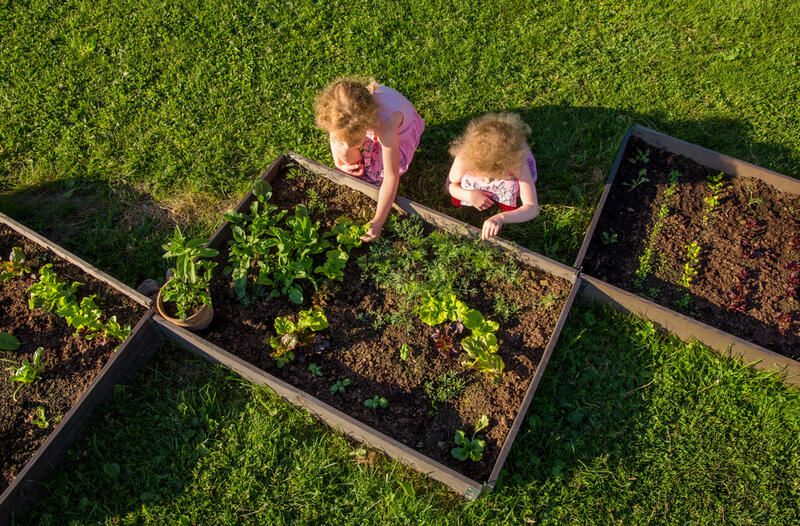
Vertical Gardening
Anyone who finds it difficult to stoop to work in a low-raised bed may want to consider the following alternative: Not out, but up! In addition to being equally simple to build as a typical raised bed, this vertical garden can help you make the most of your overlapping space.
Use Terracotta Pots
Take a look at this brilliant concept for creating a terra-cotta pot garden if all you have is a patio area. It has many of the same advantages as a typical raised bed plan but doesn't require any tools to assemble. It's ideal for tomatoes, flowers, and other plants that thrive in pots.
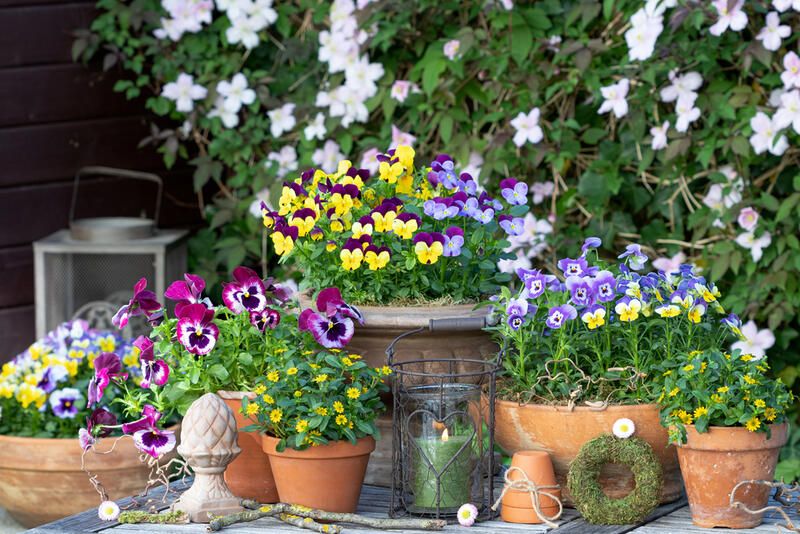
Garden Enclosure
Keeping animals and pests out of your raised garden bed has never been easier! Building a garden enclosure to protect your growing vegetables and planter box is very simple. Building a garden fence and enclosure requires some extra raised garden bed material and that's it!
Drip Water System
Installing a do-it-yourself drip irrigation system will keep garden care simple and guarantee happy plants all season.
Raised bed gardens are a great idea for any yard. All you need to do is find your desired spot and go from there! You can group similar plants closer together, choose different plants for any planting season and even use old grass clippings as fertilizer!
There are so many things you can do with your planter box from a big bed to a small one. Create a deep root system or choose plants that are naturally rot-resistant to keep maintenance at a low.
We love raised bed gardens and hope we've shared everything you need to get started on yours!


